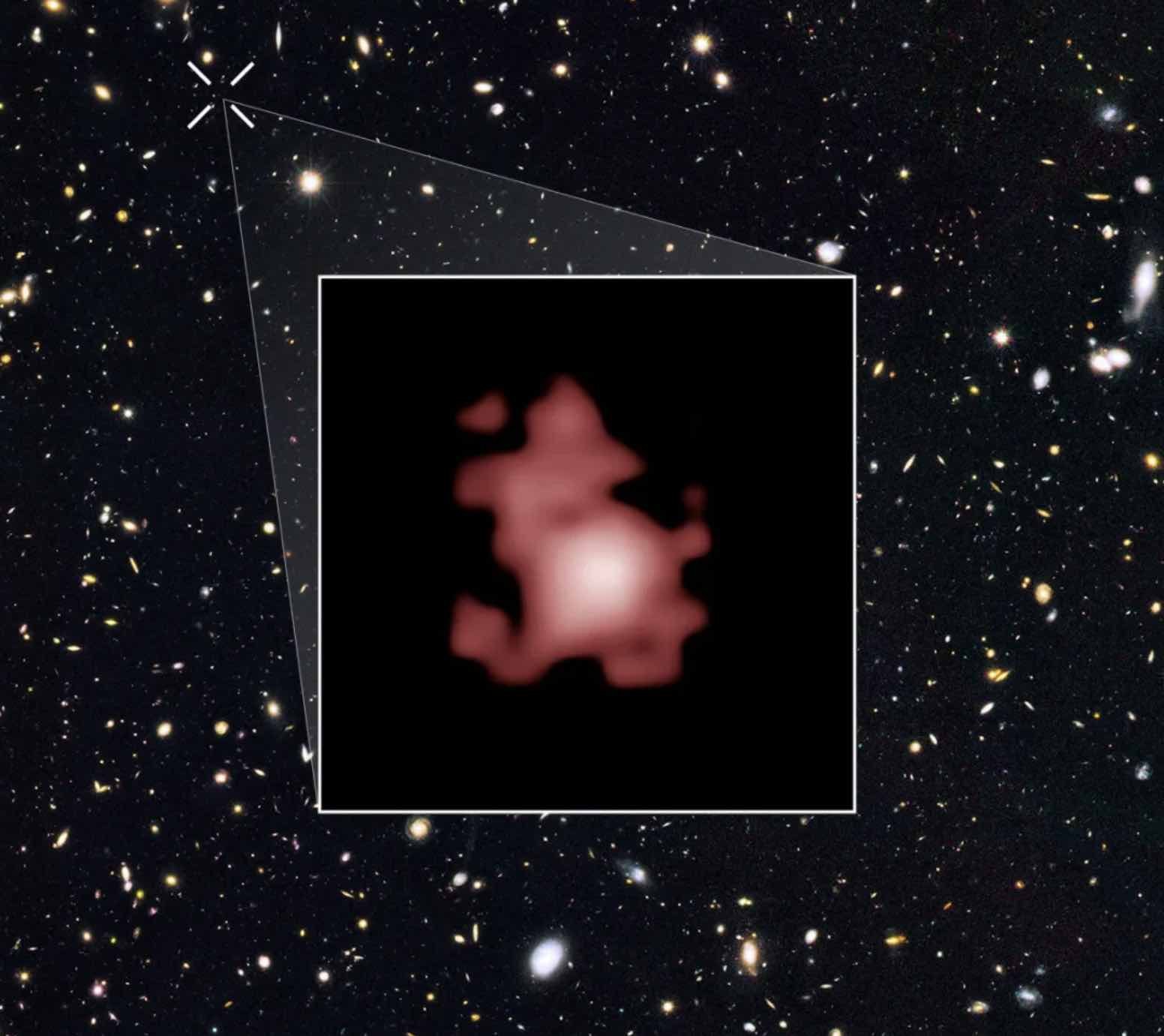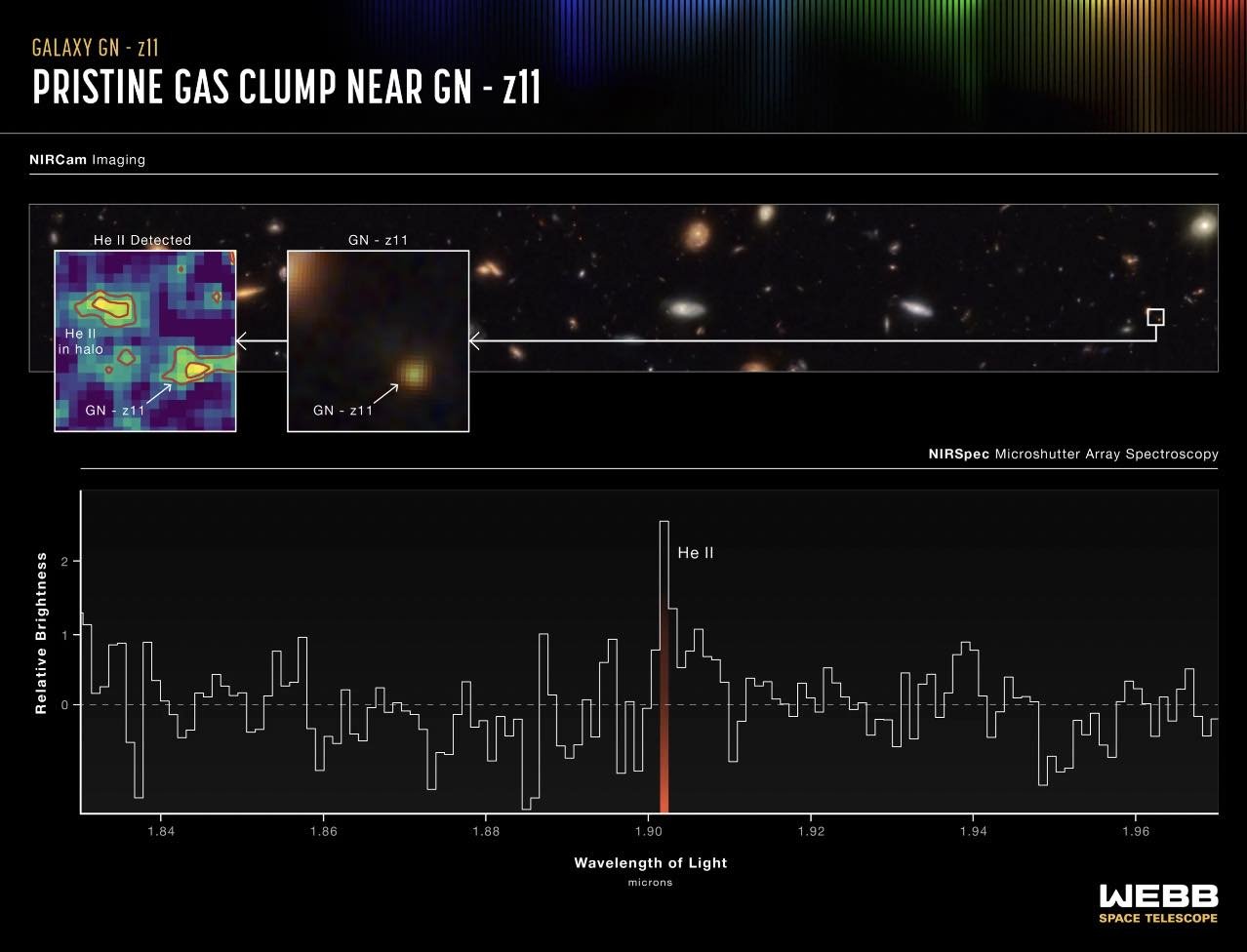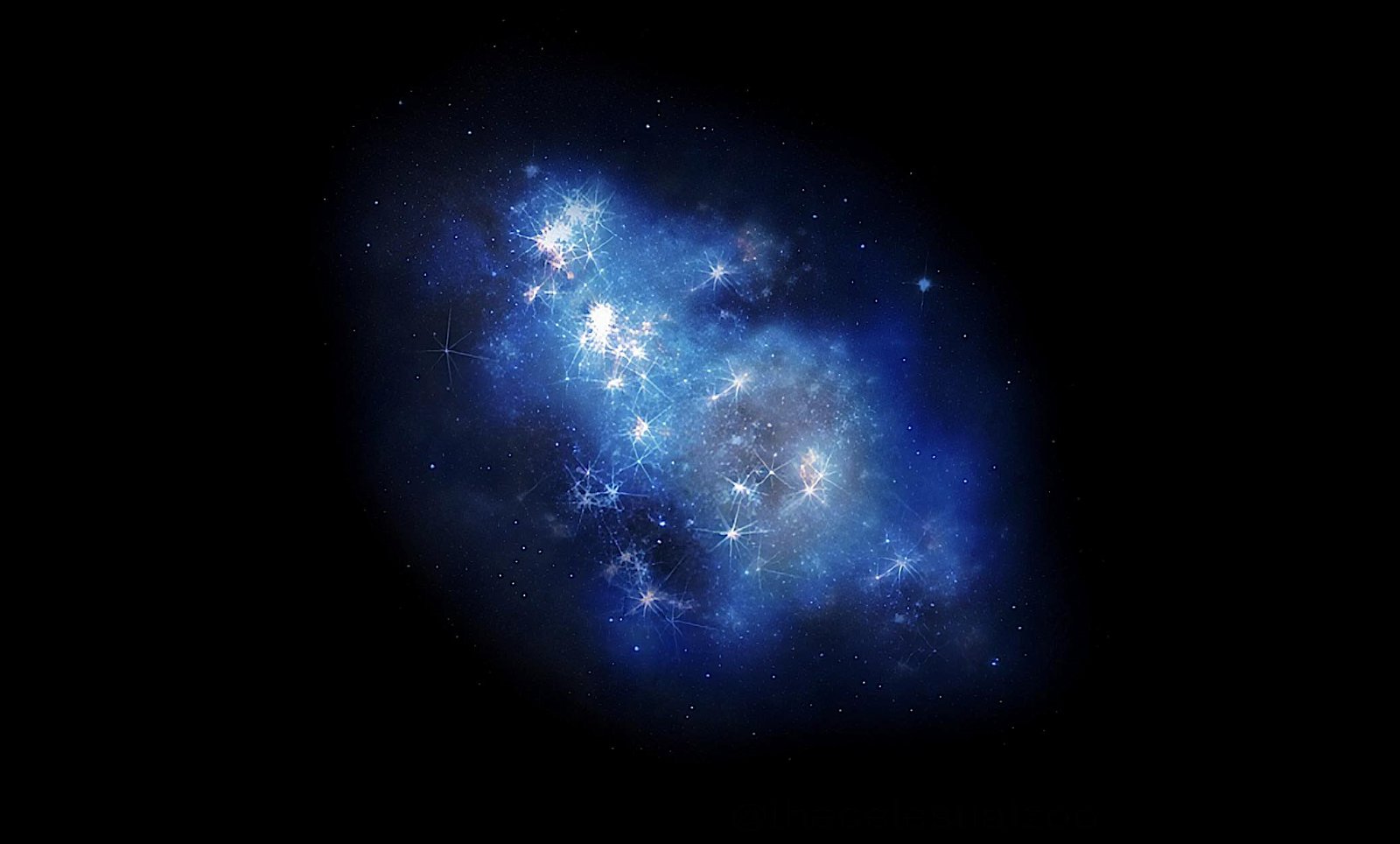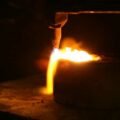A long time ago in a galaxy far, far away, large amounts of light were being generated by what is today recognized as one of the most remote star systems ever seen. Now, astronomers are getting a glimpse at how it looked at a time when our universe was still in its relative infancy with help from NASA’s James Webb Space Telescope.
Given its extreme distance from Earth, this very bright galaxy, GN-z11, is a natural target for investigations by our most advanced space telescopes. The latest findings involve the research conducted by a team studying GN-z11 with the Webb telescope, which reported earlier this year that they had found the first clear evidence that the galaxy is hosting a central, supermassive black hole that is rapidly accreting matter.
The team’s findings indicate not only that this is the farthest active supermassive black hole spotted to date, which could help astronomers understand just what makes this region of stars so luminous, but they could also be revealing a few surprises too.


Roberto Maiolino, principal investigator in a recent study using Webb to study GN-z11, said that he and his team discovered an extremely dense region of gas that is commonly found where supermassive black holes exist.
“These were the first clear signatures that GN-z11 is hosting a black hole that is gobbling matter,” said Maiolino, a researcher with the Cavendish Laboratory and the Kavli Institute of Cosmology at the University of Cambridge in the United Kingdom, in a recent statement.
Along with signs of dense gases present within GN-z11, Maiolino and his team found evidence of ionization in association with chemicals that are also commonly found near supermassive black holes, as well as signs of powerful winds that seem to be emanating from the galaxy that is consistent with a black hole’s accretion disk.
Based on data collected with Webb’s Near-Infrared Camera, or NIRCam, coloration within the center of GN-z11 also appears to be consistent with supermassive black hole accretion, according to Hannah Übler, who is also a researcher at the Cavendish Laboratory and the Kavli Institute.
The available data all appears to suggest that the galaxy possesses a supermassive hole that is actively consuming matter, which Maiolino, Übler, and their team say can explain the extreme luminosity GN-z11 displays.
In addition to the revelation of a supermassive black hole at the galaxy’s center, Maoilino also says that an intriguing region of helium was discovered in the halo around GN-z11, which is consistent with existing theories about galaxies from this early stage in the universe.


“This is something that was expected by theory and simulations in the vicinity of particularly massive galaxies from these epochs,” Maoilino says, adding that “there should be pockets of pristine gas surviving in the halo, and these may collapse and form Population III star clusters.”
Such a discovery is extremely significant in astronomy, since it involves Population III stars, made mostly from hydrogen and helium and among the earliest ever to have formed, the discovery of which is a key area of research for astrophysicists.
Current theories expect Population III stars to be very hot and equally luminous, with signatures conveying an abundance of ionized helium. Going forward, Maiolino and Übler hope that their team’s ongoing observations will help them determine whether they have indeed observed Population III stars in the gaseous halo surrounding GN-z11.
Fundamentally, studying the earliest known stars grants astronomers a unique view of a period of significant change in our universe, where it emerged from a mostly dark and simplistic state to the far more structured version of the cosmos we observe in modern times.
Maiolino, Übler, and their team’s new study on GN-z11’s supermassive black hole was published earlier this year in the journal Nature.
Micah Hanks is the Editor-in-Chief and Co-Founder of The Debrief. He can be reached by email at micah@thedebrief.org. Follow his work at micahhanks.com and on X: @MicahHanks.

